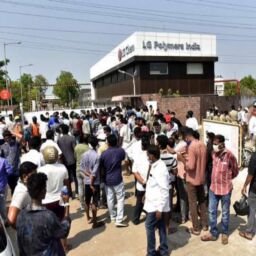Sexual Harassment at the workplace has not been new but now clamour has been seen in the sports field. #MeToo campaign has started resonating in the athletics program. Recently, several female footballers have accused Argentina’s youth coach working for the country’s football association of sexually harassing them. The independent FIFA ethics committee is currently looking into the matter.[1] Last year, a report by Indian express uncovered the bitter truth of Indian sports where it unveiled that most of the complaints were against mentors and coaches.
Twenty-nine (29) of the 45 cases of sexual harassment were traced in 24 centres of the SAI (Sports Authority of India) over the past 10 years, with pending cases against the coaches[2]. Sports requires proper training and guidance from the coaching and can be said stepping stones to success. But harassment and abuse with athletes in training centres and by coaches debilitate them mentally and physically, hence affecting their performance. Before learning the consequences and impact that harassment has on athletes, it is important for us to understand what sexual harassment is.
INTRODUCTION
Sexual Harassment has largely been considered a trivial and common working place experience for the past 15 years. The term has been coined in the United States in the 1970s and becomes recognised terminology in the US and Britain.[3] The European Commission defines it as “unwanted conduct of a sexual nature or other conduct based on sex affecting the dignity of women and men at work”[4]. In simpler words, sexual harassment can be breaking down into three basic things:
1). Unwanted sexual behaviour
2). Repetitive in nature
3). Has an adverse effect on victims
However, harassment has been misconstrued by both men and women. It needs to be distinguished from the act of flirtation, harmless romantic behaviour as harassment has an essential characteristic of being unwanted and unwelcomed behaviour. The Industrial Relations Review and Report survey list a range of actions that most respondents said they would define as acts of sexual harassment.[5] Actions that may constitute sexual harassment as per the above survey are unwanted physical contact, demand for sexual advances in return for promotion, offensive flirtations, leering, sexual assault, offensive comments on physical appearance, and sexist behaviour.
Virginia Bottomley, former health secretary of Britain once said “Many do not know how to cope with harassment. Some eventually leave the workforce and this is a tragedy both for the individual and for the health service. Every employee, male as well as female, has the right to respect and dignity at work.” The effects on recipients include irritability, anxiety, tension, depression, and deterioration of personal relationships, hostility, sleeplessness, fatigue and other symptoms of stress at work. Counsellors have pointed out that young people lack interpersonal skills, are introvert and hence are often harassed. A guide on combating sexual harassment from the Department of Employment of Britain shows that sexual harassment reduces morale and affects employers in terms of decreased output by employees[6].
SEXUAL HARASSMENT IN SPORTS
So far, sports have been considered to have contributed to the development of an individual physically and mentally. “Sport has been repeatedly justified as a vehicle for the moral education of young people and the glorification of nationhood. The advent of critical social theories in sport, from neo-Marxism to feminism, from the late1960s onwards, brought about a major shift in the way that sport was conceptualised and appraised.” [7]The last three decades saw a radicalisation in sports and breaking of the myths that sports are apolitical and brought to focus the impact of gender, race, and class on it. The questions that arise regarding the denial of harassment and abuse in sports has been the fact that it had been considered as pure; the fair play concept was applied only on players; considered male privileges over females; denoted as apolitical. Issues that have transformed the perception regarding sports are sexual exploitation, harassment and abuse.
Have you ever imagined that while playing football or any other sports, your colleague tries to push, tug or does shoulder rubs? These acts are sometimes taken by individuals as friendly as most of the victims choose to remain quiet and keep enduring the torture in order to make the team function properly. An incident such as your swimming coach trying to teach you any stroke and does something inappropriate falls under harassment. In 2015, a 15-year-old female athlete committed suicide after harassment by seniors at SAI of water sports centre at Vembanad Lake, Kerala[8]. Since then, there have been no reports on the case. Similarly, many cases and incidents go unreported mainly because victims chose to suffer the pain themselves and exit from the judicial process.
As discussed at the beginning regarding the allegation put by female footballers against Argentina’s youth team coach, the victims included players as young as a 14-year-old girl. The players have alleged him of threatening them with sexual violence in case of poor performance, using derogatory language and words, asking inappropriate questions to them and having sexist preferences and habits. Last year, FIFA banned Yves Jean Bart, the president of the Haiti Football Federation for misusing his power for abusing females and sexually harassing them.[9] Such incidents prove that elite institutions such as FIFA is even under the tentacles of sexual harassment and underscores the need for having proper implementation and execution of a professional code of ethics and conduct.
THE LEGAL PERSPECTIVE
Vishaka & Ors. Vs State of Rajasthan[10] was the landmark judgement in evolving the concept of sexual harassment. The Supreme Court issued 12 guidelines that need to be followed while women are at the workplace and issued directions to the Union of India to frame a law on this. But the question is what acted as a catalyst that made SC to issue certain guidelines. The catalyst was the gangrape of Bhanwar Devi, a Dalit woman, by five upper-caste men belonging to the Gujjar caste. She used to work for Women Development Programme in Rajasthan where she used to spread awareness regarding hygiene, girl’s education and campaigned against female foeticide, dowry and child marriage. As a part of her campaign, she stopped the wedding of a 9-yr old Gujjar girl enraging the Gujjars. After this, she was raped by 5 men. This led to many women organisations supporting Bhanwar Devi and it was recognised that she was raped while she was working for WDP.[11] Ironically, after 16 years of the verdict in the Vishaka case, the Ministry of women and child development enforced “The Sexual Harassment of Women at Workplace (Prevention, Prohibition and Redressal) Act, 2013”.
In 2013, Section 354A [12]was inserted in IPC, 1860 which criminalised all forms of sexual harassment against women. This provided women to proceed with either civil or criminal proceedings against the accused. The POSH Act obligates employers to maintain safe working conditions for women employees. The unique feature of the POSH Act is the establishment of an internal committee in each office or branch having more than 10 employees to cater to the needs and grievances of women pertaining to sexual harassment.[13]
The term “workplace” is defined broadly and includes “any sports institute, stadium, sports complex or competition or games venue, whether residential or not used for training, sports or other activities relating thereto”, and “any place visited by the employee arising out of or during the course of employment including transportation provided by the employer for undertaking such a journey”.[14]
In another landmark judgement in Apparel Export Promotion Council v. A.K. Chopra[15], the Apex Court made the following observations. The Supreme Court widened the ambit of sexual harassment and ruled out that “physical contact was not essential for a female worker to charge a male colleague with. Each incident of sexual harassment is violative of fundamental rights. There is no gain saying that each incident of sexual harassment at place of work results in violation of fundamental rights to gender equality and right of life and liberty, the two most precious fundamental rights guaranteed by Indian Constitution.”[16]
The court explained that sexual harassment was “a form of sexual discrimination projected through unwelcome sexual advances, the request for sexual favours and other verbal and physical contacts with sexual overtones, whether directly or by implication, particularly when submission to or rejection of such a conduct by a female employee was capable of being used for affecting the employment of the female employee and unreasonably interfering with her work performance.”[17]
SOLUTIONS TO BE PROPOSED
Sexual harassment can be prevented by undertaking the following steps.
- The acts of harassment and abuse demonstrate that we need a global professional code of ethics and conduct that need to be followed by every sports organization at a local level of every country.
- Secondly, there is a need to be vocal. Players need to raise their concerns and complaint regarding unwelcomed behaviour so that proper actions can be taken by the authority to prevent the perpetuation of harassment.
- Thirdly, there should be a proper screening and identity-check of the coaches and trainer. The coaches should be given an id and their id should be displayed on a website dedicated to preventing sexual harassment and abuse. Such a website will allow women to register their complaints and further proceeding can be taken against the perpetrators.
Author(s) Name: Nandini Yadav (Rajiv Gandhi National University of Law, Patiala)
References:
[1] Suzanne Wrack, ‘Women’s youth coach at Argentinian FA faces sexual harassment allegations’(The Guardian, 6 May 2021) <https://www.theguardian.com/football/2021/may/06/womens-coach-at-argentinian-fa-faces-sexual-harassment-allegations> accessed 20 September 2021
[2] Meena Gopal, ‘Athlete-coach relations have bordered on a feudal paternalism that can foster predators’ (The Indian Express, 23 Jan,2020)< https://indianexpress.com/article/opinion/columns/athletes-sports-coach-metoo-sexual-harassment-sports-authority-of-india-6230436/ > accessed 22 September 2021
[3] Peter Foster, ‘Sexual Harassment at Work’ (1992) BMJ <https://www.bmj.com/content/bmj/305/6859/944.full.pdf > accessed 22 September 2021
[4] Ibid
[5] Ibid
[6] Ibid
[7] Kari Fasting, ‘Sexual Harassment and Abuse in Sport-the research context’ (2002) Research Gate <https://www.researchgate.net/publication/49399331_Sexual_harassment_and_abuse_in_sport_-_The_research_context > accessed 20 September 2021
[8] Antara Nandi, ‘Sexual Harassment in Sports: Not Uncommon but uspoken’ (Playo, 23 Oct. 2018), <https://blog.playo.co/sexual-harassment-in-sports-not-uncommon-but-unspoken/> accessed 23 Sept.2021
[9] Supra note 1
[10] AIR 1997 SC 3011
[11] Archana Nathan, ‘Dalit woman’s rape in ’92 led to India’s first sexual harassment law – but justice still eludes her’ (Scroll, 22 Oct. 2018) <https://scroll.in/article/899044/dalit-womans-rape-in-92-led-to-indias-first-sexual-harassment-law-but-justice-still-eludes-her> accessed 20 September 2021
[12] Indian Penal Code 1860, s 354A
[13] The Sexual Harassment of Women at Workplace (Prevention, Prohibition and Redressal) Act 2013, s 4(1)
[14] The Sexual Harassment of Women at Workplace (Prevention, Prohibition and Redressal) Act 2013, s 2(o)(iv)
[15] 1997 (42) DRJ 526
[16] Ibid
[17] Ibid
















